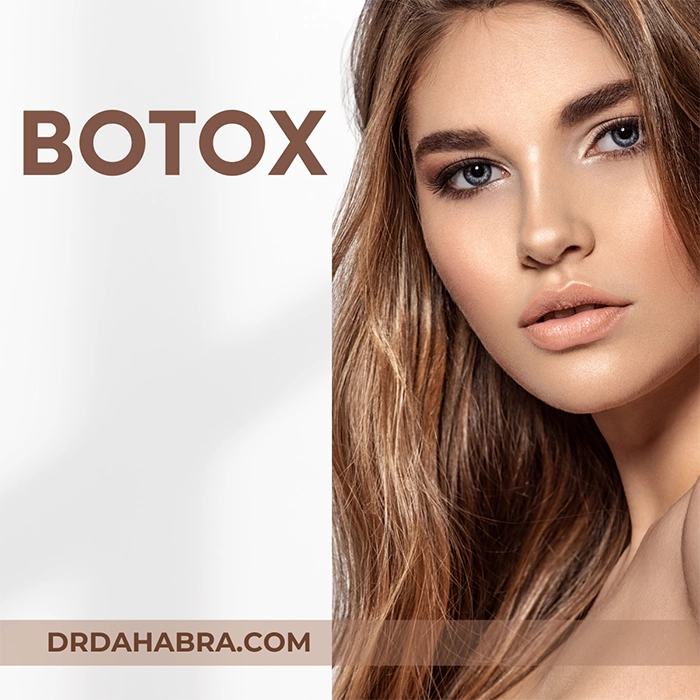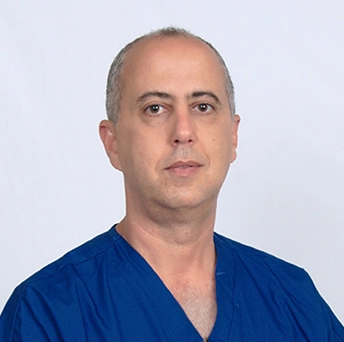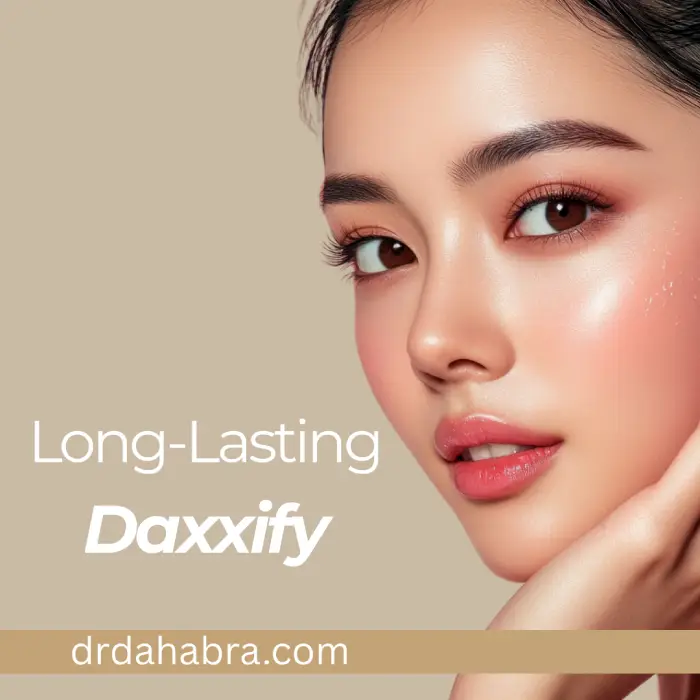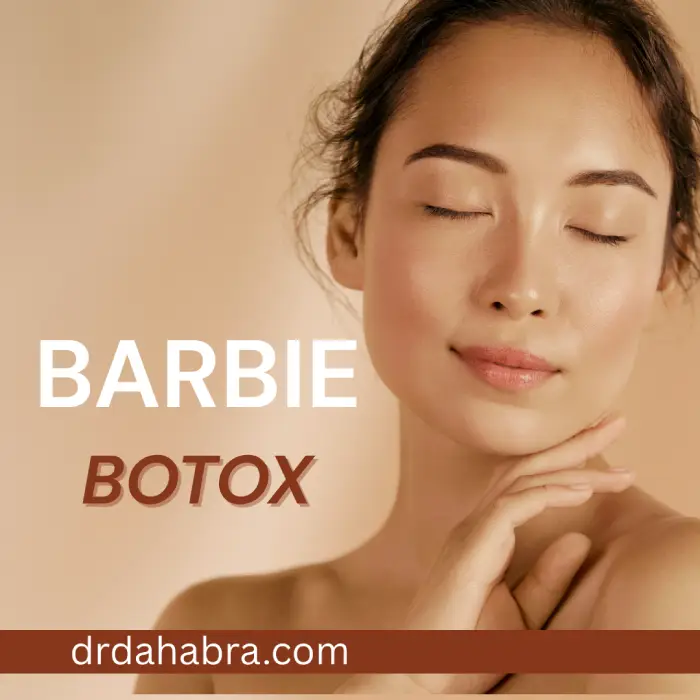The Ultimate Guide to Botox: Benefits, Risks, and Incredible Results
What Is Botox and How Does It Work?
Botox is a purified botulinum toxin widely used in cosmetic and medical treatments. This article is about the benefits risks and incredible results of Botox.
When injected, it temporarily paralyzes muscles, which reduces the appearance of wrinkles and fine lines by preventing the skin from folding. Though the word “toxin” may sound alarming, Botox is entirely safe when administered by a professional.
Cosmetically, Botox is best known for reducing wrinkles, especially on the forehead, around the eyes, and in between the eyebrows. By blocking nerve signals to specific muscles, Botox prevents the movements that cause wrinkles, giving the face a smoother and younger appearance.
The minimally invasive treatment can be performed in a clinic within minutes.
Botox isn’t just limited to cosmetic use; it also has many medical applications. It treats chronic migraines, excessive sweating (hyperhidrosis), and muscle spasms. Its versatility makes Botox one of the most popular and widely used treatments today.
Table of Contents
1. The History of Botox: From Medical Use to Cosmetic Popularity
2. Types of Botox Treatments
3. Botox for Wrinkles: The Most Common Use
4. Using Botox for Medical Conditions
5. The Botox Treatment Process: What to Expect
6. Botox vs. Dermal Fillers: Key Differences
7. Who Is an Ideal Candidate for Botox?
8. Understanding the Risks and Side Effects of Botox
9. How Long Do Botox Results Last?
10. The Cost of Botox: What Factors Affect Pricing?
11. Botox Aftercare: Ensuring Optimal Results
12. How to Choose the Right Botox Provider
13. Myths and Misconceptions About Botox
14. Future Trends in Botox and Non-Surgical Cosmetic Treatments
15. Frequently Asked Questions (FAQs)
16. Conclusion
17. Transform Your Look with Venus Legacy Body Contouring at Plantation Med Spa
18. References
1. The History of Botox: From Medical Use to Cosmetic Popularity
Botox has an exciting history that dates back to the 19th century. It was first discovered in the early 1800s as a toxin produced by the bacterium Clostridium botulinum.
However, it was in the 1970s that scientists began researching its potential for medical use. Initially, Botox was used to treat strabismus, a condition where the eyes are misaligned, and blepharospasm causes uncontrollable blinking.
By the 1990s, doctors noticed that patients receiving Botox for medical reasons were also seeing a reduction in wrinkles. This discovery led to the cosmetic use of Botox, which the FDA approved in 2002 for treating frown lines between the eyebrows.
Since then, its popularity has skyrocketed, and Botox is now a staple in medical and cosmetic treatments.
The transition from medical to cosmetic use marked a turning point in Botox’s history. Today, it’s recognized as a go-to treatment for those looking to smooth wrinkles and achieve a more youthful appearance.
Botox has become synonymous with anti-aging and aesthetic enhancements despite its humble beginnings.
2. Types of Botox Treatments
Botox treatments aren’t one-size-fits-all. There are several types of Botox injections tailored to different cosmetic and medical needs.
Botox Cosmetic is The most common type, specifically used to target wrinkles and fine lines. It’s especially effective on crow’s feet, forehead, and frown lines.
In addition to Botox Cosmetic, other formulations like Dysport and Xeomin work similarly but may differ slightly in their protein structure or how they spread in the skin. Depending on their skin type and specific needs, some people may respond better to one type.
Medically, Botox injections can treat a wide range of conditions, from chronic migraines to overactive bladder. The treatment is tailored to address the specific condition in these cases, with dosage and injection sites varying accordingly.
The versatility of Botox makes it an effective solution for both aesthetic and therapeutic purposes.
3. Botox for Wrinkles: The Most Common Use
The most popular use of Botox is for the treatment of wrinkles. It effectively reduces dynamic wrinkles caused by repeated muscle movement over time.
These include forehead lines, crow’s feet around the eyes, and frown lines between the brows. Botox works by temporarily freezing the underlying muscles, preventing them from contracting and forming wrinkles.
Botox’s ability to provide noticeable results with minimal downtime sets it apart from other anti-wrinkle treatments. The treatment is quick, often taking 15-30 minutes, and requires no recovery time.
Results typically become visible within a few days. They can last up to 4 months, making it a convenient option for those seeking a refreshed, youthful appearance without surgery.
Many people choose Botox as a preventative measure, starting in their late 20s or early 30s, to stop wrinkles from forming. By addressing the issue early, they can maintain smoother, younger-looking skin for longer, avoiding the need for more invasive procedures down the road.
4. Using Botox for Medical Conditions
While Botox is best known for its cosmetic benefits, it has several critical medical applications. One of the most well-known uses is for treating chronic migraines.
Botox is injected into specific areas of the head and neck to help reduce the frequency and severity of migraines, offering relief to those who suffer from this debilitating condition.
Another everyday medical use of Botox is in treating hyperhidrosis or excessive sweating. Botox significantly reduces sweating in the underarms, hands, and feet by blocking the nerve signals that stimulate sweat glands.
This treatment can be life-changing for individuals who struggle with excessive perspiration.
Botox also treats neuromuscular disorders like muscle spasms, overactive bladder, and even certain facial tics. Its ability to relax muscles makes it a versatile treatment option in the medical field, providing relief for patients dealing with conditions that can severely impact their quality of life.
5. The Botox Treatment Process: What to Expect
Getting Botox for the first time can be nerve-wracking, but the procedure itself is quick and straightforward. During a typical treatment, the provider will begin by assessing the areas of concern and marking the specific injection sites.
A fine needle is then used to inject the Botox solution into the targeted muscles. Most patients describe the sensation as a mild pinch, and the procedure usually takes under 30 minutes.
There is little to no downtime associated with Botox treatments, which is one of the reasons for its popularity. You can return to normal activities immediately after the procedure, although avoiding strenuous exercise and lying down for at least four hours is recommended.
Bruising and swelling at the injection sites are common but generally subside within a day or two.
Results from Botox are brief; it typically takes 3 to 5 days to start seeing the effects, with full results visible within two weeks. The longevity of results varies from person to person but generally lasts between 3 and 4 months, after which you’ll need another treatment to maintain the effects.
6. Botox vs. Dermal Fillers: Key Differences
Botox and dermal fillers are often mentioned together but are very different treatments with distinct purposes. While Botox relaxes the muscles that cause wrinkles, dermal fillers are used to add volume to the skin.
Fillers can plump up areas like the cheeks, lips, and nasolabial folds, which lose volume as we age, resulting in a more youthful appearance.
Botox is best suited for dynamic wrinkles—those caused by muscle movement.
On the other hand, dermal fillers are used for static wrinkles, which are present even when the face is at rest. Combining Botox with fillers is a common practice, as it allows for comprehensive facial rejuvenation, addressing both wrinkles and volume loss in one session.
When deciding between Botox and fillers, it’s essential to consult with a qualified professional who can assess your specific needs and recommend the best course of treatment. Both options are highly effective but work differently to achieve a refreshed, youthful look.
7. Who Is an Ideal Candidate for Botox?
Botox is a highly versatile treatment, but it’s unsuitable for everyone. Ideal candidates are generally healthy, have moderate to severe facial wrinkles or muscle spasms, and seek a non-surgical solution.
Most people start considering Botox in their late 20s or early 30s as a preventive measure to delay the appearance of wrinkles.
People who are pregnant, breastfeeding, or have certain neuromuscular disorders should avoid Botox. Additionally, if you have an allergy to any of the ingredients in Botox or have had an adverse reaction to it in the past, this treatment may not be suitable for you.
Always consult a qualified healthcare provider to determine whether Botox is the right option.
It’s also worth noting that expectations play a crucial role in determining candidacy. While Botox can produce impressive results, it’s essential to have realistic expectations.
The treatment can soften the appearance of wrinkles but won’t eliminate them or stop aging. Understanding the limits of Botox will help you be more satisfied with the outcome.
8. Understanding the Risks and Side Effects of Botox
Though Botox is generally safe, it’s not without its risks and side effects. Common side effects include mild bruising, swelling, and tenderness at the injection sites.
These are usually temporary and resolve within a few days. In rare cases, patients may experience headaches, nausea, or flu-like symptoms shortly after the treatment.
More serious complications, though infrequent, can occur if the Botox spreads beyond the targeted area. This can result in muscle weakness, drooping eyelids, or difficulty swallowing.
Choosing an experienced and qualified provider dramatically reduces the risk of such complications.
It’s essential to follow all post-treatment instructions to minimize any risks. Avoid rubbing or massaging the treated areas for at least 24 hours after your injections, as this can cause Botox to spread.
In most cases, side effects are minimal and temporary, but it’s always a good idea to be aware of potential risks before undergoing any cosmetic procedure.
9. How Long Do Botox Results Last?
One of the most common questions about Botox is how long the results will last. On average, Botox treatments last between 3 to 4 months.
The duration can vary depending on factors such as the area treated, the amount of Botox used, and individual patient characteristics like metabolism and muscle strength.
For most people, the effects of Botox start to wear off gradually. Muscle movement returns as the Botox wears off, and the wrinkles may reappear.
Regular maintenance treatments every few months help maintain a consistent, youthful appearance.
It’s important to note that, over time, the duration of results can vary. Some individuals find that the effects of Botox last longer after multiple treatments as the muscles weaken and the skin adjusts.
However, Botox is not a permanent solution, so ongoing treatments are necessary to preserve the results.
10. The Cost of Botox: What Factors Affect Pricing?
The cost of Botox can vary widely depending on several factors. One of the most significant factors is geographic location.
Botox treatments are more expensive in larger cities or regions with higher living costs. The experience and reputation of the provider can also impact the price, as more skilled practitioners may charge higher rates for their expertise.
Another factor that affects pricing is the amount of Botox needed. Botox is usually priced per unit, and the number of units required depends on the treated area and the depth of the wrinkles.
For example, treating crow’s feet typically requires fewer units than treating deep forehead lines.
Lastly, the frequency of treatments can affect the overall cost. Since Botox results are temporary, regular maintenance sessions are necessary to maintain the desired look.
It’s important to discuss the total cost upfront with your provider to ensure there are no surprises down the line.
11. Botox Aftercare: Ensuring Optimal Results
Proper aftercare is essential to ensure you get the best results from your Botox treatment.
Immediately after the procedure, it’s important to avoid rubbing or massaging the treated areas for at least 24 hours. This prevents the Botox from spreading to unintended muscles, which could cause complications such as drooping eyelids.
It would help to avoid strenuous exercise, saunas, and hot baths for 24 to 48 hours after treatment. These activities can increase blood flow to the face, potentially causing the Botox to move from the targeted area.
Staying upright for at least four hours after the procedure is also recommended to allow the Botox to settle correctly.
In the days following your treatment, avoid excessive sun exposure and always use sunscreen to protect your skin. Taking care of your skin not only helps prolong the results of Botox but also enhances your overall complexion, ensuring you look refreshed and rejuvenated.
12. How to Choose the Right Botox Provider
Selecting the right provider for your Botox treatment is crucial to ensuring both safety and satisfaction.
Start by researching qualified, board-certified dermatologists or plastic surgeons specializing in Botox and other cosmetic treatments. These professionals have the training and experience to administer Botox safely and effectively.
Look for a provider with a solid reputation and positive reviews from past patients. It’s also good to schedule a consultation before committing to the treatment.
During the consultation, ask about the provider’s experience, the number of treatments they perform, and whether they use genuine Botox products.
In addition, feel free to ask questions about the procedure, potential risks, and expected results. A reputable provider will take the time to answer your questions and set realistic expectations.
Avoid providers who pressure you into additional treatments or don’t take the time to explain the process thoroughly.
13. Myths and Misconceptions About Botox
There are many myths and misconceptions about Botox that can make people hesitant to try it.
One common myth is that Botox will leave your face looking frozen or expressionless. While Botox temporarily paralyzes muscles, a skilled practitioner can strategically place the injections for natural movement and expressions.
Another misconception is that Botox is only for older individuals with visible wrinkles. In reality, many people in their 20s and 30s get Botox as a preventative measure to delay the appearance of wrinkles.
Preventative Botox can keep the skin smoother for longer, reducing the need for more invasive procedures in the future.
Some people also believe that Botox is dangerous or toxic. While Botox is derived from a toxin, it is used in tiny and controlled doses that have been proven safe through decades of research and use.
As long as it’s administered by a trained professional, Botox is a safe and effective treatment for both cosmetic and medical purposes.
14. Future Trends in Botox and Non-Surgical Cosmetic Treatments
As non-surgical cosmetic treatments continue to rise in popularity, Botox is evolving to meet the needs of an increasingly beauty-conscious world.
One of the emerging trends is micro-botox, a technique where smaller amounts of Botox are injected into the skin’s surface layers rather than the muscles. This approach creates a more natural look while improving skin texture and reducing pores.
Another trend is the combination of Botox with other non-surgical treatments like laser therapy or microneedling. These combination treatments can enhance results, providing a comprehensive rejuvenation that targets multiple signs of aging at once.
This multi-modal approach allows patients to achieve a youthful glow without invasive surgery.
Looking ahead, research is also being conducted on longer-lasting formulations of Botox. While current treatments last about 3 to 4 months, scientists are exploring ways to extend the longevity of results, reducing the need for frequent touch-ups.
As technology and techniques advance, Botox will remain at the forefront of cosmetic treatments for years.
15. Frequently Asked Questions (FAQs) About Benefits Risks and Incredible Results of Botox
Q1: Is Botox safe?
Concise Answer: Botox is safe when administered by a qualified professional.
Detailed Answer: Regulatory bodies like the FDA have extensively studied and approved Botox for cosmetic and medical use. When injected by a trained provider, Botox is safe, effective, and generally well-tolerated, with minimal side effects.
Q2: How long does Botox last?
Concise Answer: Botox typically lasts between 3 to 4 months.
Detailed Answer: The effects of Botox are temporary, lasting approximately 3 to 4 months, depending on the individual and treatment area. Over time, muscle movement gradually returns, and with it, wrinkles may reappear. Regular treatments help maintain long-lasting results.
Q3: Does Botox hurt?
Concise Answer: No, Botox injections cause minimal discomfort.
Detailed Answer: Most patients describe Botox injections as a slight pinch or sting. The procedure is quick, usually lasting only 15-30 minutes, and no anesthesia is required. Any discomfort is brief and manageable, with most people resuming their normal activities immediately after treatment.
Q4: What age should I start Botox?
Concise Answer: Many start Botox in their late 20s or early 30s.
Detailed Answer: While there is no specific age at which to start Botox, many individuals begin treatment in their late 20s or early 30s to prevent wrinkles from forming. Others may choose to wait until wrinkles become more prominent. Consult with a professional to determine the right time for you.
Q5: Can Botox be used for medical conditions?
Concise Answer: Yes, Botox treats various medical conditions.
Detailed Answer: Botox is not only used for cosmetic purposes but also medical conditions such as chronic migraines, hyperhidrosis (excessive sweating), and muscle spasms. It’s FDA-approved for these uses, relieving symptoms that can significantly affect daily life.
Q6: How much does Botox cost?
Concise Answer: Botox costs vary based on location and provider experience.
Detailed Answer: The cost of Botox depends on where you live, the provider’s expertise, and how many units you need. On average, treatments range from $300 to $600 per session. It’s best to get an estimate from your provider based on your specific needs.
Q7: Are there any side effects of Botox?
Concise Answer: Most side effects are mild and temporary.
Detailed Answer: Common side effects of Botox include mild bruising, swelling, and tenderness at the injection sites. These side effects usually resolve within a few days.
More severe complications like drooping eyelids or allergic reactions can occur in rare cases, but these are uncommon when administered by a professional.
Q8: Can Botox make you look unnatural?
Concise Answer: No, when done correctly, Botox looks natural.
Detailed Answer: Botox can create a natural and refreshed appearance when administered by a skilled provider.
Choosing a qualified professional to place injections for subtle, natural-looking results strategically is essential to avoid the “frozen” look.
Q9: Can Botox prevent wrinkles?
Concise Answer: Yes, Botox can prevent wrinkles from forming.
Detailed Answer: Botox is often used preventatively to stop wrinkles from forming in the first place. By relaxing the muscles that cause dynamic wrinkles, Botox can help maintain smoother skin for longer, delaying the need for more invasive procedures in the future.
Q10: What should I avoid after getting Botox?
Concise Answer: Avoid rubbing your face, doing strenuous exercise, and going to saunas.
Detailed Answer: After Botox, avoid rubbing or massaging the treated areas for 24 hours, as this can cause the Botox to spread. You should also avoid strenuous exercise, hot baths, and saunas for at least 48 hours to prevent increasing blood flow to the face, which could affect the results.
Q11: How long before I see Botox results?
Concise Answer: Results appear within 3 to 5 days.
Detailed Answer: Botox results aren’t immediate. Most people see improvement within 3 to 5 days after treatment, with full results visible after about two weeks. The timing can vary depending on factors like metabolism and the area treated.
Q12: Can I get Botox while pregnant?
Concise Answer: No, Botox is not recommended during pregnancy.
Detailed Answer: Botox has not been thoroughly tested on pregnant or breastfeeding women, so it’s generally advised to avoid Botox treatments during this time. If you’re pregnant or planning to become pregnant, consult your healthcare provider for advice on when it’s safe to resume treatments.
Q13: Is Botox addictive?
Concise Answer: No, Botox is not physically addictive.
Detailed Answer: Botox is not physically addictive, but some people may enjoy the results so much that they choose to continue treatments regularly. While it’s common to seek regular touch-ups, there is no physical dependence on Botox, and patients can stop treatments at any time without withdrawal effects.
Q14: Can Botox be reversed?
Concise Answer: Botox cannot be reversed but wears off naturally.
Detailed Answer: Botox cannot be reversed once injected, but the effects are temporary. Over time, the body naturally metabolizes the Botox, and muscle movement returns to normal. If you’re unhappy with the results, you’ll need to wait for the Botox to wear off, which typically takes 3 to 4 months.
Q15: Is Botox vegan or cruelty-free?
Concise Answer: No, Botox is not considered vegan or cruelty-free.
Detailed Answer: Botox is tested on animals as part of its safety regulation processes, which means it’s not considered cruelty-free. Additionally, the production process may involve animal-derived ingredients.
If vegan or cruelty-free products are essential to you, discuss alternative treatments with your provider.
16. Conclusion: Benefits Risks and Incredible Results of Botox
Botox has evolved from a niche medical treatment into a cosmetic powerhouse, offering beauty enhancements and relief from medical conditions. Its ability to smooth wrinkles, treat conditions like chronic migraines, and provide non-invasive results has made it a go-to solution for millions.
While it’s not without risks, these are minimal when administered by qualified professionals.
Botox offers a convenient, effective, and relatively low-maintenance option for those seeking a youthful appearance. Whether you’re new to Botox or looking to enhance your current regimen, understanding its benefits, risks, and treatment process is essential to achieving the best results.
As non-surgical treatments evolve, Botox remains a trusted tool in the fight against aging, with future advancements likely to expand its versatility and accessibility.
Botox can help you look and feel your best with the right provider and proper care, whether for aesthetic or medical reasons.
Its wide range of applications and proven safety make it a treatment worth considering for anyone looking to enhance their quality of life or maintain a youthful glow.
We have covered everything about the benefits risks and incredible results of Botox.
17. Transform Your Look with Botox Treatment
Experience the revolutionary power of the Botox treatment in Florida. Our state-of-the-art treatment revitalizes and rejuvenates, offering you a path to radiant, youthful skin. Why wait to unlock your best self?
Call us now at (954) 595-2607 or book online. Your journey to flawless skin begins with just a click or a call.
Embrace the beauty, embrace innovation – Embrace You.
18. References
- Dr. Chadi Dahabra
- Plantation Med Spa
- West Palm Beach Med Spa
- Beverly Hills Wellness Center & Med Spa
- BOTOX® for Chronic Migraine – A Preventive Treatment
- Mayo Clinic Q and A: Botox for Migraines
- Botox for Chronic Migraine: Tips and Tricks – Practical Neurology
- PREEMPT Protocol for Migraine Prophylaxis with Botox
- Botox Injections for Neuromuscular Conditions: Medical Study




